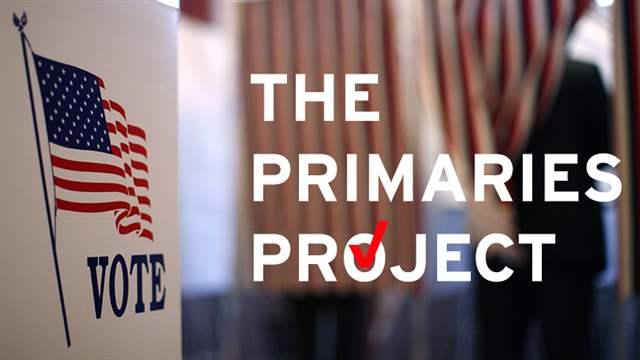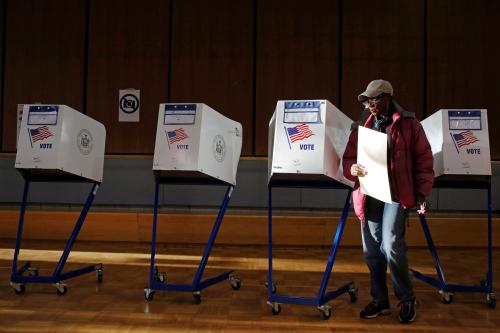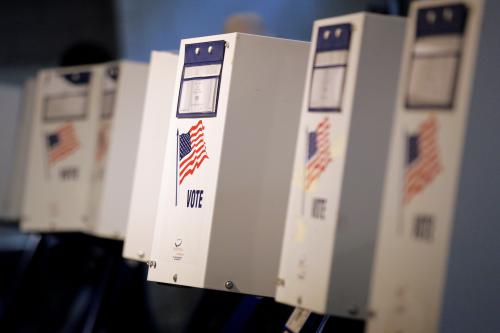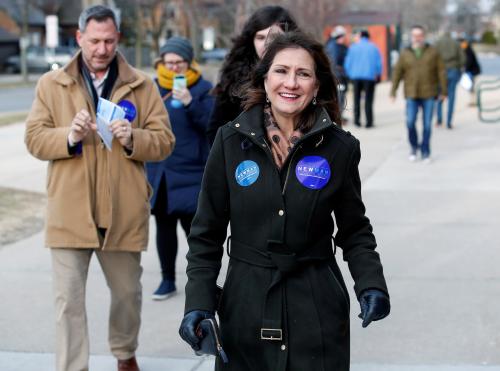Each primary week seems to bring a new headline. Pundits are still discussing Alexandria Ocasio-Cortez, a 28-year-old democratic socialist who beat long-term incumbent Joe Crowley in New York’s 14th congressional district. A more recent victory sure to gain a lot of attention is Rashida Tlaib who won her primary in Michigan’s 13th congressional district with support from several progressive groups and is on her way to becoming the first Muslim woman in Congress. (She has no Republican opponent in the fall.)
So what’s happening out there? Is there a civil war in the Democratic Party? Is the left winning? Losing?
Here at the Primaries Project we’ve been monitoring the candidates in every single congressional race in the country. So far we’ve looked at nearly 1,900 Senate and House candidates in over 600 races in the 2018 field. By coding each candidate in terms of how he or she self-identifies ideologically, we can get a sense of the internal dynamics within each political party. Here’s what we know about the Democrats so far. (We’ll write about the Republicans in a later post.)
As we wrote in an earlier analysis, this year has seen an outpouring of enthusiasm among self-proclaimed progressives, and many more progressives are running in Democratic primaries than have run in recent years. However, the number of progressives winning their primaries is respectable but not overwhelming. As the table below indicates, non-incumbents who we rate as “establishment” candidates are winning more often than progressives and in numbers that are not substantially different from our last count.
| Table 1: Primary Candidate Results by Party Category for House Non-Incumbents (Democrats) | |||||
|---|---|---|---|---|---|
| Win | Lose | Adv. to Runoff | |||
| Establishment |
107 (31.9%) |
207 (61.8%) |
21 (6.3%) |
||
| Progressive |
74 (23.8%) |
220 (70.7%) |
17 (5.5%) |
||
Source: The Primaries Project at Brookings (Kamarck and Podkul). Note: Row percentages reported. Table does not include candidates coded as “Moderate” (n = 24) or “Other” (n = 93). It also does not include races not yet called.
In addition, as the graph below indicates, many progressive candidates are winning in Republican-leaning districts which means that they may not make it to the Congress in the fall after all, as those districts are harder for a Democrat to win compared to a toss-up or Democratic-leaning seat.

So far, the Democratic Party looks to be more or less what it has always been: a center/left party. Having a progressive member of Congress from the Bronx and a conservative member of Congress from North Carolina is nothing new. Thus far, as the high turnout numbers seem to indicate, Democrats are a center/left party united against Donald Trump. The divisions on issues will not be very relevant until such time as Democrats control the Congress and the Presidency again. But in the meantime the reality is more mundane and the revolution will have to wait.
The Brookings Institution is committed to quality, independence, and impact.
We are supported by a diverse array of funders. In line with our values and policies, each Brookings publication represents the sole views of its author(s).










Commentary
Progressives versus the establishment: An updated score
August 9, 2018